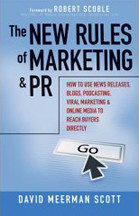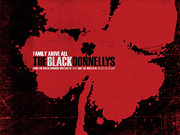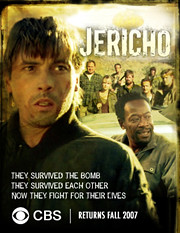When David Meerman Scott first posted his long list of thanks to more than 150 bloggers (myself included) for adding something that influenced his book, The New Rules of Marketing & Public Relations, different bloggers had different reactions. They ranged from gratitude and excitement to bewilderment and feelings of obligation (some even called it “obligatory” in their headlines).
Before I toss in my one-and-a-half cents on Scott’s book (it’s more commentary than review), I want to briefly address the latter. Obligatory links, posts, comments, and reviews are a myth. Nobody has to write about anything they don’t want to. Just because someone sends you something or mentions your name doesn’t mean you owe them anything.
Sure, Scott’s original thank you post was part sincerity and part promotion, which certainly has its place in the world of social media. Only Scott knows how much he leaned toward one or the other. In doing that, it was interesting to watch how some people responded to it. Some posted links to everyone mentioned, some did not, and some (like me) tried to find a happy medium (I added the links in a comment because this blog was not well suited to include the list in my post). I did it because I wanted to; no other reason.
That said, there’s only one reason I have something to say about Scott’s book: it has merit to have something said about it. (Never mind the gracious inscription on the advanced copy I read, which I appreciated.) Scott did something with his book that is not easy to do. He hit the fast-moving target that is social media in such a way that his book will actually have shelf life.
I know it’s not easy to do this because when I look back on my first social media PowerPoint presentation (mostly blog focused) from 2005, I know that most of it has become but a snapshot of living history. Yep, time travels ten times as fast on the Internet.
But Scott finds the middle, offering up a mix on social media rules that will change and some that will not. In that way, it succeeds especially well in giving those interested in social media a crash course in catch up.
Any company interested in becoming more customer-centric owes it to themselves to take a long, hard look at social media because this is a medium about people. While some claim the risks are too great (because there can be unexpected consequences) and the reward too small (what does it do for sales, they ask), Scott makes the case that social media will soon be as common as a Web site, assuming it doesn’t profoundly change Web sites all together with added features. Right. Anything and everything from niche social media networks to full-length company-focused video programs.
The real benefit has been and continues to be a chance for companies to interact with consumers directly. Those that want to win with such an endeavor only need to conclude a few things — including that solid content will win over spin every time.
Done right, Scott says you can reach niche buyers with targeted messages for a fraction of the cost. Personally, I don’t think social media can replace every element of an integrated campaign. It’s a tool not a strategy in and of itself. But this idea is one that will permanently stick by year’s end.
Here, I’ll infuse one of my talking points on social media as an example. If you compare one post that attracts 10,000 to a direct mail piece that attacts the same number, assuming we use the lackluster 2 percent response rate on direct mail (our company does better than that average, hitting somewhere between 7-50 percent, depending on the company, offer, target, etc.), the cost savings is impossible to ignore. For the two hours it takes to write a planned post for a client, it would take 500,000 pieces to generate the same amount of traffic. At $1.50 to $2.50 per piece, what is the smarter investment? (And no, I’m not suggesting we dump direct mail completely.)
For public relations, where the best approaches are still being debated (as if it isn’t clear), Scott says that the audience is no longer a handful of journalists but millions of people on the Internet. He’s right there too; there is even a hierarchy of sorts and companies need to find the right mix of consumers, various bloggers, and journalists.
As Scott points out, bloggers tend toward promoting a single viewpoint as opposed to journalists who attempt to avoid their own views and focus on the views of others (bias aside). It’s one of the reasons I’ve likened blogs to op-eds as rather than reporting (though some of that exists too). Naturally, some are just diaries, etc. but more and more people are asking if anyone just blogs anymore. (Less and less, it seems to me, which is a shame.)
There is good and bad in this singular viewpoint. The best of it fills a void created by a growing group of journalists who think you always need two views. You do not. In fact, I still think the best journalists shoot for the truth, and sometimes that means two sides aren’t needed. (Do we really need to find wingnuts on either side of the issue every time?)
If Scott falls short anywhere in his book, it might be in that the choir of social media believers doesn’t fit the primary target audience. Sure, social media experts and seasoned bloggers could pull hundreds of post ideas right out of this book, but much of what is here can be found, well, from the blogs and sites many of us visit (including Web Ink Now). Yet, I’m the first to admit that Scott’s book was desperately needed, and only hope those who haven’t tested the social media waters will have the sense to pick it up.
Another area where my praise becomes a whisper is in the potential for some people to mistake excellent tactical examples as some semblance of a strategy or strategies. I hope not. It’s something to keep in mind if you are among the greater body of traditional marketers and executives who thought social media was a fad (some still do) but are now terrified that you somehow missed the train (don’t worry, there’s more than one stop on this ride). Instead, think of this book as a tool that will help you get your arms around many interesting ideas being tested today.
In sum, Scott’s book is snapshot of what is happening right now. It provides enough content to help convince executives that entering the sea of social media is worth the investment. It can bring traditional communicators up to speed. And, it can give experienced bloggers content ideas along with a roundup of details in case they missed one.
I like it enough to add it to our book shuffle weeks ago. It will stay there, at least until something better comes along, probably by Scott himself.

Before I toss in my one-and-a-half cents on Scott’s book (it’s more commentary than review), I want to briefly address the latter. Obligatory links, posts, comments, and reviews are a myth. Nobody has to write about anything they don’t want to. Just because someone sends you something or mentions your name doesn’t mean you owe them anything.
Sure, Scott’s original thank you post was part sincerity and part promotion, which certainly has its place in the world of social media. Only Scott knows how much he leaned toward one or the other. In doing that, it was interesting to watch how some people responded to it. Some posted links to everyone mentioned, some did not, and some (like me) tried to find a happy medium (I added the links in a comment because this blog was not well suited to include the list in my post). I did it because I wanted to; no other reason.
That said, there’s only one reason I have something to say about Scott’s book: it has merit to have something said about it. (Never mind the gracious inscription on the advanced copy I read, which I appreciated.) Scott did something with his book that is not easy to do. He hit the fast-moving target that is social media in such a way that his book will actually have shelf life.
I know it’s not easy to do this because when I look back on my first social media PowerPoint presentation (mostly blog focused) from 2005, I know that most of it has become but a snapshot of living history. Yep, time travels ten times as fast on the Internet.
But Scott finds the middle, offering up a mix on social media rules that will change and some that will not. In that way, it succeeds especially well in giving those interested in social media a crash course in catch up.
Any company interested in becoming more customer-centric owes it to themselves to take a long, hard look at social media because this is a medium about people. While some claim the risks are too great (because there can be unexpected consequences) and the reward too small (what does it do for sales, they ask), Scott makes the case that social media will soon be as common as a Web site, assuming it doesn’t profoundly change Web sites all together with added features. Right. Anything and everything from niche social media networks to full-length company-focused video programs.
The real benefit has been and continues to be a chance for companies to interact with consumers directly. Those that want to win with such an endeavor only need to conclude a few things — including that solid content will win over spin every time.
Done right, Scott says you can reach niche buyers with targeted messages for a fraction of the cost. Personally, I don’t think social media can replace every element of an integrated campaign. It’s a tool not a strategy in and of itself. But this idea is one that will permanently stick by year’s end.
Here, I’ll infuse one of my talking points on social media as an example. If you compare one post that attracts 10,000 to a direct mail piece that attacts the same number, assuming we use the lackluster 2 percent response rate on direct mail (our company does better than that average, hitting somewhere between 7-50 percent, depending on the company, offer, target, etc.), the cost savings is impossible to ignore. For the two hours it takes to write a planned post for a client, it would take 500,000 pieces to generate the same amount of traffic. At $1.50 to $2.50 per piece, what is the smarter investment? (And no, I’m not suggesting we dump direct mail completely.)
For public relations, where the best approaches are still being debated (as if it isn’t clear), Scott says that the audience is no longer a handful of journalists but millions of people on the Internet. He’s right there too; there is even a hierarchy of sorts and companies need to find the right mix of consumers, various bloggers, and journalists.
As Scott points out, bloggers tend toward promoting a single viewpoint as opposed to journalists who attempt to avoid their own views and focus on the views of others (bias aside). It’s one of the reasons I’ve likened blogs to op-eds as rather than reporting (though some of that exists too). Naturally, some are just diaries, etc. but more and more people are asking if anyone just blogs anymore. (Less and less, it seems to me, which is a shame.)
There is good and bad in this singular viewpoint. The best of it fills a void created by a growing group of journalists who think you always need two views. You do not. In fact, I still think the best journalists shoot for the truth, and sometimes that means two sides aren’t needed. (Do we really need to find wingnuts on either side of the issue every time?)
If Scott falls short anywhere in his book, it might be in that the choir of social media believers doesn’t fit the primary target audience. Sure, social media experts and seasoned bloggers could pull hundreds of post ideas right out of this book, but much of what is here can be found, well, from the blogs and sites many of us visit (including Web Ink Now). Yet, I’m the first to admit that Scott’s book was desperately needed, and only hope those who haven’t tested the social media waters will have the sense to pick it up.
Another area where my praise becomes a whisper is in the potential for some people to mistake excellent tactical examples as some semblance of a strategy or strategies. I hope not. It’s something to keep in mind if you are among the greater body of traditional marketers and executives who thought social media was a fad (some still do) but are now terrified that you somehow missed the train (don’t worry, there’s more than one stop on this ride). Instead, think of this book as a tool that will help you get your arms around many interesting ideas being tested today.
In sum, Scott’s book is snapshot of what is happening right now. It provides enough content to help convince executives that entering the sea of social media is worth the investment. It can bring traditional communicators up to speed. And, it can give experienced bloggers content ideas along with a roundup of details in case they missed one.
I like it enough to add it to our book shuffle weeks ago. It will stay there, at least until something better comes along, probably by Scott himself.



















